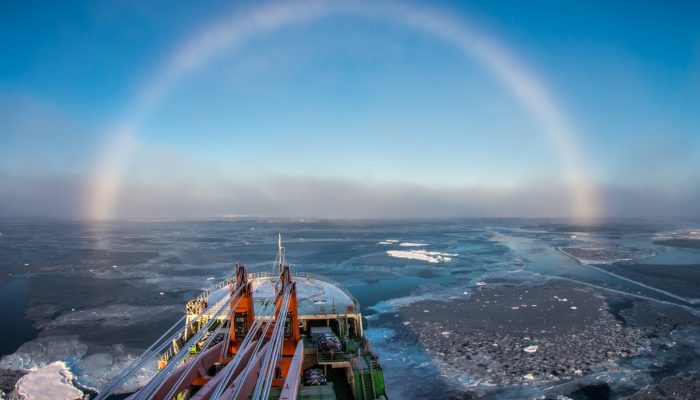
Shipping goods across the oceans is cost-effective and super-efficient; that’s why over 80% of world trade is carried by sea (according to the International Maritime Organisation). But the shipping industry also contributes significant amounts of air pollutants to marine and coastal environments.
A new study, published in the EGU’s open access journal Earth System Dynamics, reports on concentrations of sulphur, nitrogen, and particulate matter (PM), from 2011 to 2013, in the Baltic and North Seas – one of the busiest shipping routes in the world. The study aims to provide policy-makers with better knowledge about how shipping impacts local environments. The end-goal being better industry regulations and technology to make shipping more sustainable in the long-term.
The reality of shipping goods by sea
In the past two decades reduction pledges, like the Paris Climate Accord, and strict regulation have driven down air pollutants from land-based emissions across Europe, but greenhouse-gas emissions from the shipping industry are not subject to as strict international protocols.
And that’s a problem.
It is estimated that there are about half a million ships in operation at present, which together produce almost one billion tonnes of carbon dioxide each year (that’s more than Germany emits in the same period!). Over the past 20 years, emissions of pollutants from shipping in the Baltic Sea and North Sea have increased.
Worryingly, economic growth in the region means shipping is only set to increase in the future. In fact, the European Commission predicts that shipping emissions will increase between 50% and 250% by 2050.
Why should you care?
While cruising the high seas, ships emit a dangerous cocktail of pollutants. When burnt, their fuels emit sulphur dioxide and as ship engines operate under high pressure and temperature, they also release nitrogen oxides. Combined, they are also the source of particulate matter of varying sizes, made up of a mixture of sulphate (SO4), soot, metals and other compounds.
The authors of the Earth System Dynamics paper, led by Björn Clareman of the Department of Earth Sciences at Uppsala University, found that international shipping in the Baltic Sea and the North Sea was responsible for up to 80% of near-surface concentrations of nitric oxide, nitrogen dioxide and sulphur dioxide in 2013.
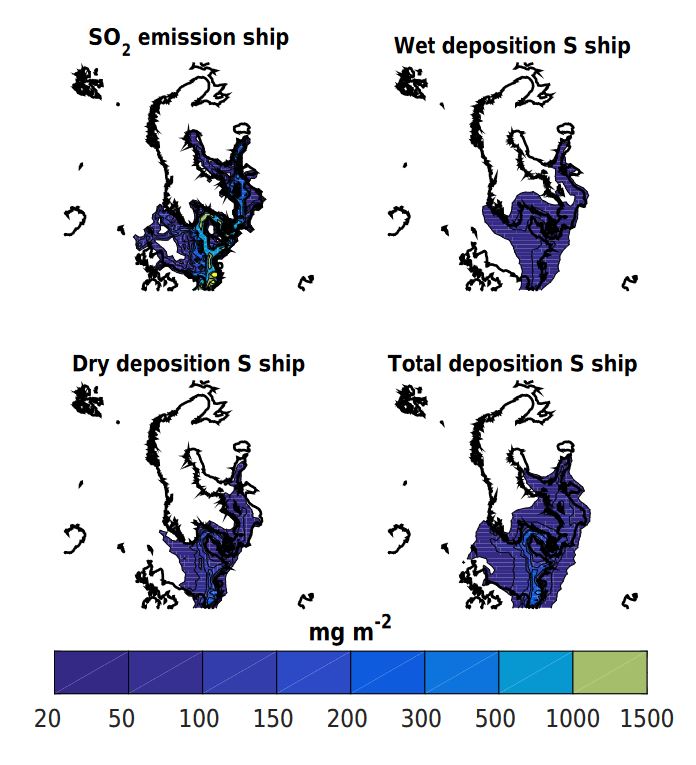
Total emissions of SOx and deposition of OXS (oxidized sulphur) from international shipping in the Baltic Sea and North Sea in 2011. From B.Claremar et al., 2017.
In addition, the team’s simulations show that PM from shipping was distributed over large areas at sea and over land, where many people will be exposed to their harmful effects. The highest concentrations are found along busy shipping lanes and big ports. In total, shipping was responsible for 20% of small sized PM (known as PM2.5) and 13% of larger particles (PM10) during the studied period.
These pollutants have harmful effects on human health: It is thought that living close to the main shipping lanes in the Baltic Sea can shorten life expectancy by 0.1 to 0.2 years. Sulphur oxides in particular, cause irritation of the respiratory system, lungs and eyes; while a 2007 study estimated that PM emissions related to the shipping industry cause 60,000 deaths annually across the globe.
Environmentally, the effects of shipping pollution are concerning too. Deposition of nitrate and sulphate causes the acidification of soils and waters. The brackish waters of the Baltic Sea make them highly susceptible to acidification, threatening diverse and precious marine ecosystems.
The current problem
Legislating (and then monitoring and enforcing) to limit the negative impact of shipping emissions is tricky given the cross-border nature of the industry. For instance, currently, there is no international regulation for the emission of PM. However, the International Maritime Organisation’s (as well as others; see Claremar, B., et al., 2017 for details of all regulations) does impose limits on sulphur and nitrogen emissions from ships (in some parts of the world).
Low-sulphur fuels and switching to natural gas are an effective way to control emissions. However, operators can also choose to fit their vessels with an exhaust gas treatment plant, or scrubber, which uses sea water to remove sulphur oxides – the by-products of high-sulphur fuels. So called open-loop scrubbers release the dirty exhaust water back into the ocean once the tank is cleaned. The practice is known to increase ocean acidification globally, but particularly along shipping lanes.
As of 2021, the transport of goods via the North and Baltic Seas will be subject to the control of nitrogen and sulphur emissions, which could decrease nitrogen oxide emissions by up to 80%. However, the study highlights that the continued use of scrubber technology will significantly offset the benefits of the new legislation. If cleaner alternatives are not implemented, total deposition of these harmful particles may reach similar levels to those measured during the 1970s to 1990s, when shipping emissions were largely unregulated.
By Laura Roberts Artal, EGU Communications Officer
Those who have an interest in this subject might want to contribute an EU Public consultation on the revision of the policy on monitoring, reporting and verification of CO2 emissions from maritime transport. The International Maritime Organisation (IMO) adopted the legal framework for the global data collection system (IMO DCS) in July 2017. This Consultation is now reviewing the situation and would like input on things such as the monitoring of ships’ fuel consumption, transparency of emission data and the administrative burden of the new system. While the Consultation is not specifically aimed toward scientists, it may interest EGU researchers who are working in the marine, climate and atmospheric sciences sectors.
Refences and resources
Claremar, B., Haglund, K., and Rutgersson, A.: Ship emissions and the use of current air cleaning technology: contributions to air pollution and acidification in the Baltic Sea, Earth Syst. Dynam., 8, 901-919, https://doi.org/10.5194/esd-8-901-2017, 2017.
Lower emissions on the high seas. Nature, 551, 5–6, https://doi:10.1038/551005b, 2017
Corbett, J. J., Winebrake, J. J., Green, E. H., Kasibhatla, P.,Eyring, V., and Lauer, A.: Mortality from ship emissions: a global assessment, Environ. Sci. Technol., 41, 8512–8518, 2007.
Dashuan, T., and Shuli, N.: A global analysis of soil acidification caused by nitrogen addition, Environ. Res. Lett., 10, 024019, https://doi:10.1088/1748-9326/10/2/024019, 2015
What is Ocean Acidification? Ocean Facts by NOAA
Reducing emissions from the shipping sector, Climate Action by the European Commission


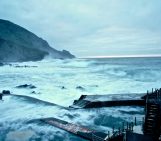
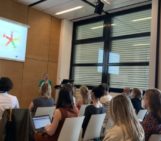
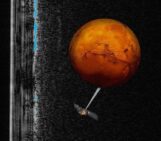
Simon Kettle
Interesting, and have you seen the TROPOspheric Monitoring Instrument data from the Sentinel satellites? The air pollution map shows spooky correlation with shipping lanes. https://36qxd1l7f7y2pa9s2h6gbwi1-wpengine.netdna-ssl.com/wp-content/uploads/2017/11/Nitrogen_dioxide_forecast.png